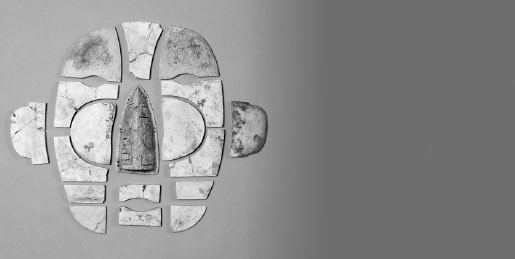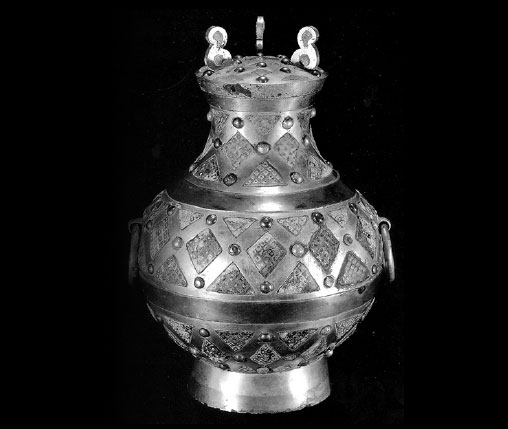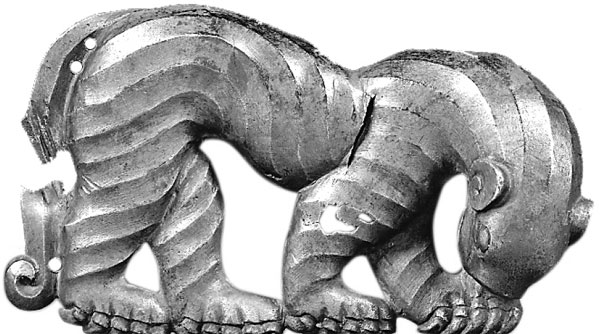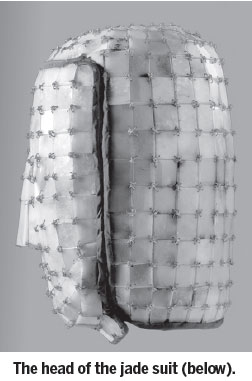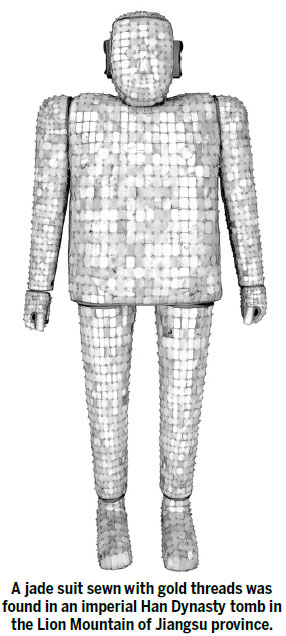From 3 July 2014 to 16 February 2015 will be presented, for the first time in Italy in the halls of the Refectory of the fifteenth-century Palazzo Venezia, an exhibition that tells the time of the Han Dynasty (206 BC - 220 AD) through the treasures from the tombs found at Mawangdui and held by the Hunan Provincial Museum, one of the most important institutions of the museum system of China. On display will be exhibited 76 pieces of inestimable value, such as lacquers, textiles, manuscripts and paintings on silk. The exhibition allows you to unearth an ancient civilization through a major archaeological discovery, reflecting the very essence of a people that already at that time was recognized as "the land of silk and porcelain."
The exhibition curated by Professor Zhen Shubin, has the patronage of the Ministry of Culture of the Republic of China, the Embassy of the People's Republic of China in Italy together with the Ministry of Heritage and Culture and Tourism of the Italian Republic (MiBACT), and is organized by the State Administration of Cultural Heritage of the Republic of China (SACH), the Directorate General for the enhancement of the cultural heritage of MiBACT, the Special Superintendence for Artistic and Ethno-anthropological Heritage and for the Museum of the City of Rome, in collaboration with the Provincial Administration of Hunan.
The exhibition is part of the Memorandum of Understanding on Partnership for the Promotion of Cultural Heritage signed October 7, 2010 between the Ministry of Heritage and Culture and Tourism of the Italian Republic and the State Administration of Cultural Heritage of the People's Republic of China, which provides for the exchange of permanent museum space dedicated to the respective cultures in order to promote cultural exchange between China and Italy and allow a greater and deeper understanding between the two peoples.
The first significant Italian model of a museum outside the national borders, permanent showcase for promoting Italian culture, the exhibition space has been given to the Directorate General for the enhancement of cultural heritage by the State Administration of Cultural Heritage of the Republic of China in the National Museum China's Tian on 'Tian'anmen Square in Beijing, space opened with the exhibition "Renaissance in Florence. Masterpieces and Protagonists "and currently hosts the exhibition" Rome seventeenth century origin of the Baroque.
The discovery of the tombs of the Han period at Mawangdui, in the city of Changsha (capital of the province of Hunan in southern China), is one of the great discoveries made in the twentieth century in China. Between 1972 and 1974, Chinese archaeologists unearthed a set of tombs belonging to the family of Li Cang, the Marquis of Dai and Prime Minister of the State of Changsha. A discovery that began in a completely serendipitous, following a series of excavations for an underground shelter, and thanks to the emergence of so-called "wisps." The three tombs found, contained in them more than 3,000 objects, including lacquers, ceramics, bronzes, silks, and jades, which are able to witness the excellent results achieved by the artistic and cultural heritage and to offer an insight into the Chinese society in the Han period. The immense value of the findings revealed and especially the discovery of a corpse fully integrates meant that experts paragonassero this discovery to the "tomb of Tutankhamun" in Egypt. The body of the Marquise of Dai is the first and oldest in the world body found still fully intact, not completely dehydrated and with tissues not yet completely drives.

The exhibition brings together for the first time in Italy an important selection of these archaeological findings, telling the whole story related to the tombs of Mawangdui and showing to the public the main results obtained from their discovery, as well as to understand, in an organic , the splendor that characterized the Han civilization. Divided into three sections, "Ancient legends of Mawangdui," "Secrets millennial disvelati from ancient tombs" and "The splendid archaeological remains found inside the tombs," the exhibition is offered as a multi-layered story, able to unite the stages of archaeological discovery with the legends connected to it.
The exhibition begins with all those aspects that have helped to create an aura of mystery around Mawangdui. From the ancient legends, such as the "Mound of King Ma" or "Tomb of the two women," until the unexpected appearance of a "wisp" that kicked off the series of archaeological excavations since the seventies. In China in the middle of a "Cultural Revolution", even the then Prime Minister Zhou Enlai took charge of the work for which they were also involved in the military People's Liberation Army. To account for this extraordinary tale, the exhibition brings together 76 items including lacquer, silk textiles, manuscripts and silk paintings, accompanied by a series of thematic analysis and multimedia installations.
Mawangdui was the burial place of the family of the Marquis of Dai. Here were buried Li Cang, the first Marquis of Dai, his wife Xin Zhui and one of their sons. The works on display represent the best pieces found in the tombs of Mawangdui and recompose the private world of an aristocratic family of the time; among them stand out the thirst refined and elegant, like the muslin fabric printed with colorful decorative motif phytomorphic and one in silk gauze printed with a decorative pattern in flames, unique demonstration of the achievements in the textile manufacturing, and remembered even by Pliny the Vecchio, who describes them as "tissue of origin heavenly." But in addition to reconstruct a slice of everyday life, through containers, bronze mirrors, wooden combs, tweezers in bone and other materials, the exhibits on display remind the echo of a historical reality and philosophical-religious extraordinary. The Banner funerary painted silk T-shaped in fact gives us the image cosmogony which had at that time the Chinese, describing their idea of life after death and the desire for immortality who led them. Divided into three sections, representing the planes of existence, heaven, earth and the underworld, the center presents the Marquise of Dai leaning on a stick, in a pictorial representation where reality, fantasy and mythology harmonize with each other.
Of particular importance in this regard are the manuscripts on strips of bamboo or wooden tablets, content-rich different from each other, as in "Tianwen Qixiang za zhan" (divination through the interpretation of the astrological phenomena and atmospheric), the most oldest ever found in the world where it is specifically the forms of comets, or "Wushi'er bing fang" (Medical prescriptions for 52 diseases), the text pharmacological oldest and most complete ever discovered. Techniques and remedies for obtaining a fulfilling sex life to sexual practices to keep in good physical and mental condition, up to a range of practical advice for their own health: in these unique manuscripts, philosophy, politics, history and religion come together in what can be considered a true "underground library."
The finest silks, the most ancient manuscripts, the rarest items; The legendary tombs of Mawangdui, places us before the eyes of the high level of progress that characterized more than two thousand years ago, the civilization of the Han era and allows us to appreciate the achievements of the twentieth century Chinese archeology.

















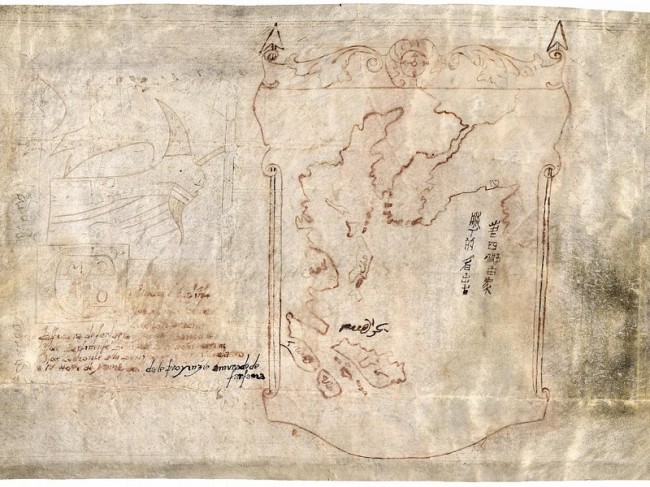
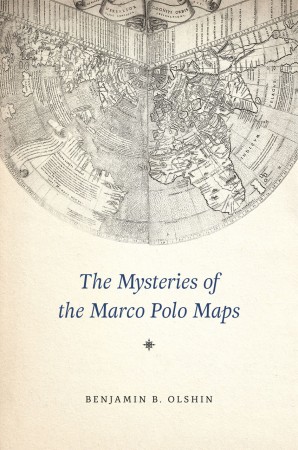
 Located a mere 4 hours away by air from Kansai International Airport in Japan is Ulan Bator, the capital of Mongolia. Just 400km west of that is Karakorum – a city designated as the capital of the Mongolian Empire after it was built as a military base by Genghis Khan in the early 13th century. It is in this city that artifacts of the Khitan Period were unearthed by Nara University (Japan) during an archaeological survey in 2009. The relics are being exhibited at the Karakorum Museum, which was built in 2011 with interest-free loans from the Japanese Government.
Located a mere 4 hours away by air from Kansai International Airport in Japan is Ulan Bator, the capital of Mongolia. Just 400km west of that is Karakorum – a city designated as the capital of the Mongolian Empire after it was built as a military base by Genghis Khan in the early 13th century. It is in this city that artifacts of the Khitan Period were unearthed by Nara University (Japan) during an archaeological survey in 2009. The relics are being exhibited at the Karakorum Museum, which was built in 2011 with interest-free loans from the Japanese Government.
 The next site is Baibalyk. Although the place has been listed as a World Heritage Site as the “Orhon Valley Cultural Landscape”, only some parts of the rammed-earth construction remain, while the rest have turned into vast grasslands that witness the occasional nomad group, herding sheep across the ruins leisurely.
The next site is Baibalyk. Although the place has been listed as a World Heritage Site as the “Orhon Valley Cultural Landscape”, only some parts of the rammed-earth construction remain, while the rest have turned into vast grasslands that witness the occasional nomad group, herding sheep across the ruins leisurely.
